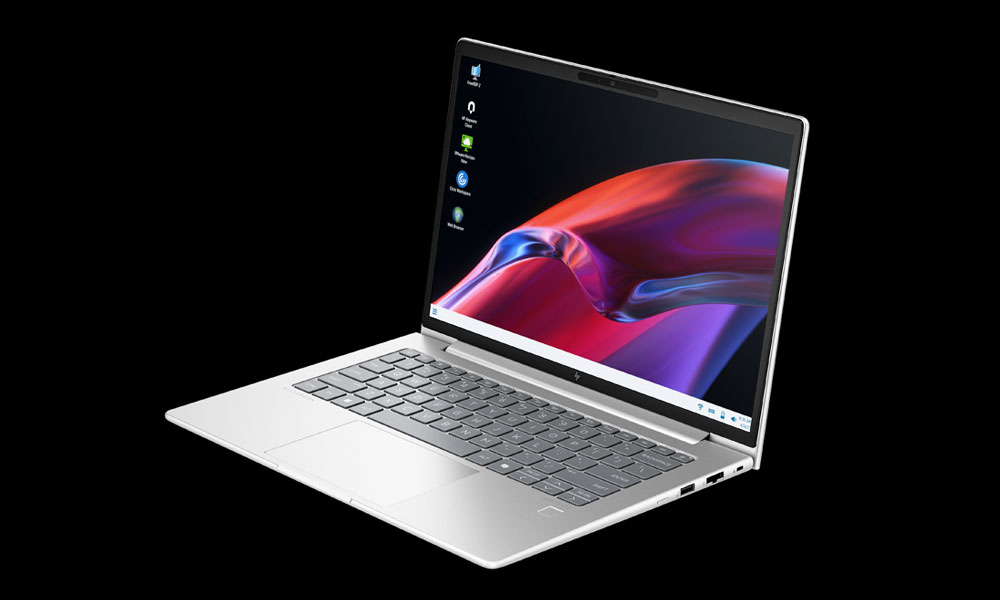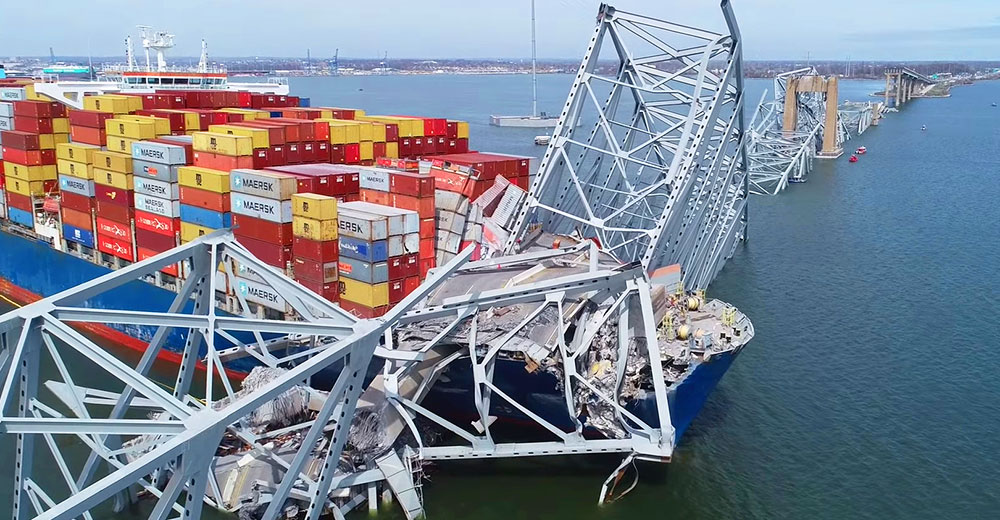Today is April Fools’ Day, but this is no laughing matter. The U.S. is dealing with one of the most expensive accidents in its history. On March 26, a container ship lost power several times and hit the Francis Scott Key Bridge with two pilots on board. Lives were lost, and it’s estimated to take $400 million and possibly a decade to rebuild.
I’ve had a lot of experience on the water. I taught myself to sail at age 12, worked on the harbor patrol as both enforcement and fire and trained to race 17-meter boats. The largest boat I’ve helmed was a 450-foot freighter to Micronesia (I wasn’t good at it).
We could have avoided last week’s disaster if the port had been properly automated and run by AI. Let’s walk through how we might use AI to prevent this kind of disaster, why AI is potentially much safer for ports of all types, and why it is critical we begin to use AI tools more aggressively to have a better chance of preventing this kind of catastrophic outcome.
We’ll close with my Product of the Week, the HP Elite mt645 G8, a new thin client laptop from HP that could dramatically reduce support aggravation and improve security in companies and schools.
My Fantome Schooner Story
The Key Bridge disaster reminds me of when I was sailing on a much smaller 679-ton Fantome schooner. The captain of that ship told the following story.
They had moored the schooner next to a larger Norwegian Cruise Lines ship. The Fantome’s captain used to be a captain for NCL, so he wanted to show off leaving port. He ordered the sails unfurled, only to see that instead of turning like it was supposed to, the Fantome was aimed right at the Norwegian ship.
The Fantome was an ex-warship, so it had not only a solid steel bowsprit but also a bow that was protected by about three inches of battleship steel since it was designed to be able to ram. The Norwegian ship, in contrast, had about .25 inches of lighter steel protecting it amidships. The problem was that the third mate, who was supposed to have raised the foresails, which would push the boat around, was instead flirting with passengers.
The captain had a choice: fire up the huge engines and order full astern, which would likely just punch a hole the size of a house in the side of the cruise ship, or order full ahead and hope there was enough steerage to bring the ship around far enough to miss entirely.
Of course, if the ship didn’t come around, he’d likely sink both ships. He ordered full ahead but still hit the cruise ship with a glancing blow, scraping down the side and snapping the square-rigged top mast (as thick as I was tall and solid oak) in half.
Sadly, he died at sea when the Fantome sank a few months later in a massive storm — but avoiding an “almost” unavoidable accident is what an experienced skipper is capable of and well within the capability of a well-trained AI.
My point is that most captains aren’t big risk-takers, rarely have to deal with catastrophes, aren’t regularly trained or certified on simulators, and are generally unprepared for problems like the bridge collision or my Fantome story.
However, exceptional captains learn from their peers, expect problems, and execute a variety of drills to help assure positive outcomes. AI can make every captain a great captain if properly trained and implemented, and it can act at machine speeds far faster than humans.
Using AI To Prevent Another Bridge Catastrophe
While we will likely spend much of the post-collision effort looking for people to blame, in my world, the work should initially be to both understand the problem and immediately move to prevent its recurrence.
The issue appears to be that the cause of the problem wasn’t identified in a timely manner, the crew wasn’t trained on what to do when there is a catastrophic power failure in close quarters (though the two pilots evidently were), and notifications for help went out far later than they should have, which prevented most mitigation efforts other than blocking the bridge and calling for tugs — which were done — from being effective.
Modern ships have extensive sensors that report to the bridge. However, this data generally isn’t conveyed in real time to anyone who isn’t on board the vessel, unlike commercial aircraft, which also report in real time to a number of remote monitoring stations. A typical port authority generally lacks the staffing level required for effective remote monitoring, even if they were to receive this data. So, simply requiring the data flow to the port authority probably would not have changed the outcome.
This is where AI, or in this case multiple AIs, would come in.
Had the bridge crew had access to a well-trained AI, that AI would have, depending on the implementation, modeled what was likely to happen, estimated the damage and liability for each of many potential outcomes, and then recommended or executed the plan with the best potential for reducing damage and saving lives — by likely immediately dropping the anchors and ordering engine restart and full astern.
Further, it probably would have begun alerting and mitigation efforts as soon as the engines started to behave badly and well before engine failure.
The Port Authority’s AI would have, through remote monitoring, identified the same problem and responded immediately by ordering the bridge closed and evacuated for safety, alerting tugs (which could be robotic) to immediately deploy and halt and hold the container ship, and spun up both fire and patrol resources to deploy and stand by as needed.
Granted, much of this would have also required integrated communications, which evidently were not in place since, as of this writing, it appears no one notified the bridge crew before the collapse.
Such measures would have added layers of protection for the bridge, helped ensure that no lives were lost, and prevented a catastrophe that will likely cost billions, making the cost of training and deploying the AI in both the ship and the Port Authority trivial by comparison.
Just as importantly, the artificial intelligence systems could share all their actions and lessons learned from the accident with other ships and ports, further reducing the risk of similar incidents. This approach starkly contrasts with the current situation, where the knowledge gained from this disaster might never reach crews that do not visit this particular port.
For perspective, a new container ship typically costs between $50 million and $200 million. The cost to create a custom generative AI is about $100 million and is justifiable if it prevented just one accident like the Key Bridge. Once trained, this same AI could be used on multiple ships with relatively little modification. This one accident will likely incur liability in the $1 billion-plus range, supporting the argument that it is worth the money to use AI to ensure this kind of thing never happens again.
Wrapping Up
AI has been developed to drive vehicles of all sizes autonomously. IBM has been testing AI automation on ships for some time, and core to its implementation is a concept Toyota once called Guardian Angel.
This feature is designed to step in during a crisis and do whatever is necessary to protect the people and the vehicle using the equivalent of centuries of driver/navigator training provided through tools like Nvidia’s Omniverse. For a catastrophe like this, that extra edge, acting either autonomously or through command staff, could and will make the difference between a close-miss story like the Fantome and the tragic bridge collapse.
The ability of AI to intervene effectively in emergencies, utilizing simulated training to protect people and vehicles, underscores the necessity for its broader deployment. No one is prepared for every critical problem, but artificial intelligence can come far closer than any human, and we all could use an actual Guardian Angel.

HP Elite mt645 G8 Mobile Thin Client
I started working in tech about the same time the IBM PC came to market. While working for IBM, I had the horrible experience of being temporarily moved from a PC to a terminal. To say I hated that move would be a massive understatement.
Nonetheless, terminals had several advantages. They didn’t run code, so catching viruses was not a concern, and their appliance-like nature meant that after warming up (they used old tube TV-like CRT displays), they never seemed to break. Although I never figured out why I needed a color monitor or a light pen.
However, PCs provided far more flexibility and freedom, so we traded the security, reliability, and ease of use of terminals for the much harder-to-use PCs that gave us more freedom. Since that pivot, the industry has been trying to regain the benefits of the terminal while still retaining the freedom of a PC. The closest thing it came up with was the “thin client,” which is basically a PC that ran everything initially from a hosted service and now mainly from the cloud.
The historical issue with thin clients is that they tended to look cheap; they were slow with significant latency (you seemed to be always waiting for them), and they needed a wired connection to work, meaning they couldn’t be mobile.
However, with the advent of 4G and modern Wi-Fi, the latency and slowness issues have been corrected, and the user experience is now close to what it would be on a stand-alone PC. But they still were embarrassingly cheap looking, and users given one thought they were being punished.
Well, the HP Elite mt645 G8 not only runs Windows IoT or Linux (ThinPro), but it looks just like any other premium professional HP laptop. It has Wolf Security, including Wolf’s unique security chip, and is configurable with a 1,000-nit Sure View display for secure outside work.

The HP Elite mt645 G8 mobile thin client laptop (Image Credit: HP)
This mobile thin client device has Wi-Fi 6e compatibility and a 4G option (I expect 5G is coming), Ryzen graphics, a 5MP camera, a software stack optimized for virtualization and Office 365, and, while it initially uses Windows IoT 10, it will have the option to move to Windows IoT 11 shortly.
It makes relatively heavy use of recycled and recyclable materials and carries an EPEAT Gold certification for sustainability. Plus, given it is useless if not connected to a service and doesn’t store data locally, if it is stolen, your exposure is limited, and the thief will just end up with a nice-looking bricked laptop that they can’t use.
The HP Elite mt645 G8 is coming soon. It is the best thin client laptop I’ve seen, and my Product of the Week.























































